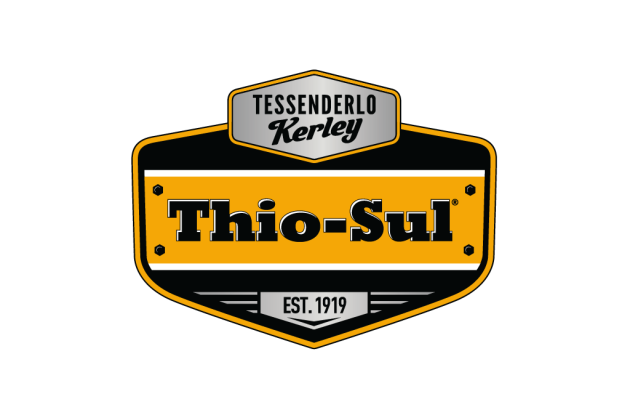
Nuts
Nuts are enjoyed worldwide as a nutritious and convenient source of protein. Key crops in this group include almonds, pistachios, hazelnuts, pecans, and walnuts. Balanced fertilization programs are essential to ensuring productive yields year after year. It is important to ensure that enough nutrition is available to support the tree itself as well as the developing nut crop.
Oftentimes orchards are setup with micro irrigation systems (drip or microsprinklers). When this is the case, liquid fertilizers are ideal because soluble plant nutrients can easily be injected into the irrigations system to be delivered directly to the roots. Additionally, nutrient applications can be timed to match important growth stages to maximize the value of the fertilizer investments.
Our fertilizer portfolio will successfully address your crop nutrition needs by providing immediately available nutrients to the plant. Here are some suggestions for using our fertilizers when growing your nut crop.
-

Potassium (K)
Nut crops tend to be potassium “sinks” meaning that a large portion of the potassium taken up by the tree goes directly to the developing nuts. For example, in almonds nearly 90 lbs of potash (K2O) is removed for every 1000 lbs of harvested kernels. To prevent potassium deficiency and maximize yield, potassium must be available to the tree either by residual potassium in the soil or by potassium fertilizer applications. It is important to take periodic leaf tissue samples to ensure that potassium levels in the tree are sufficient throughout the growing season.
When leaf tissues indicate that potassium should be applied, both KTS and K-Row 23 are excellent source of soluble potassium. KTS contains sulfur in the thiosulfate form. As thiosulfate converts to plant available sulfate in the soil, it generates some acidity that can help to manage high pH soils, and can help some other nutrients like phosphorous and some micronutrients increase in availability. K-Row 23 will allow for increased application rates, important especially when K applications are unexpectedly delayed, for example, by spring rains. Also consider applying soluble potassium using KTS and K-Row 23 after harvest to ensure the tree has sufficient available potassium for early season growth coming out of dormancy.
-

Nitrogen (N)
Nitrogen is one of the most important nutrients for proper growth and development of nut trees. Managing nitrogen can be delicate balance. Too little nitrogen could result in poor plant growth, while too much could cause excessive vegetative growth and poor nut production. Timing is also important; nitrogen should be available to the tree during the early season through nut development, and then post-harvest, but nitrogen applications should be avoided in the weeks leading up to maturity and harvest.
N-Sure offers extended nitrogen availability over a longer period compared to other nitrogen sources. When applied to the soil, N-Sure releases plant-available nitrogen over 8 to 10 weeks. It can be added to other nitrogen fertilizers including UAN and urea solutions to provide some immediately available nitrogen along with the slow-release nitrogen from N-Sure. When applied as a foliar spray, N-Sure acts as a humectant, keeping the leaf surface moist and allowing for direct uptake into the leaf tissue.
-

Calcium (Ca)
Calcium is an ever-important nutrient for nut trees. Because calcium is key in building strong cell walls, ensuring that calcium is available to the growing tree can help prevent limb failure, excessive nut drop, and support proper root development. Calcium is also important to building soil structure which in turn leads to improved water infiltration and salinity management. Soil microbial communities can also benefit from applications of calcium, which can increase air movement into the soil to support aerobic activity.
CaTs is a 100% solubilized form of calcium. Because it is in the liquid form, the calcium in CaTs immediately starts working upon application providing all of the benefits of soluble calcium previously mentioned.
-

Sulfur (S)
Sulfur is often referred to as the fourth major nutrient due to its importance in proper plant function. Adequate sulfur levels are crucial for a profitable crop. Sulfur works synergistically with nitrogen, as both nutrients play roles in protein synthesis, formation of amino acids, and photosynthesis functionality. Thio-Sul, KTS, CaTs, and K-Row 23 all provide essential sulfur, along with other essential nutrients to ensure that nut trees thrive. Thiosulfate sulfur provides the additional benefit of generating soil acidity to help manage high pH soils.

Nutrition for next season starts here.
Learn how post-harvest potassium applications with K-Row 23 or KTS can help almond trees recover for next season.
Learn more-
-

Additional Learning
Check out our library of content geared towards teaching the best crop nutrition practices to growers around the world.
- CaTs and Efficient Water Uses
- Post Harvest Potassium for Almond Trees
- California Almond Grower Testimonial (Video)
- How Liquid Fertilizers help California Almond Growers (Video)
-

Get Local Support
If you're looking for further insights on how Crop Vitality products can help you achieve your yield goals, reach out and a Crop Vitality Specialist will get back to you as soon as possible!
